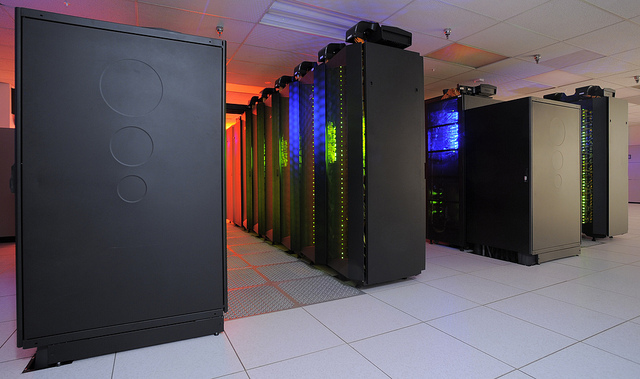
Discover Supercomputer 3” by NASA Goddard Space Flight Center is licensed under CC BY 2.0
The race between countries to build the fastest, biggest or first of anything is nothing new – think the race to the moon. One of the current global competitions is focused on supercomputing, specifically the race to Exascale computing or a billion billion calculations per second. Recently, governments (President Obama’s Executive Order and China’s current lead in supercomputing) are allocating significant resources toward Exascale initiatives as they start to understand its vast potential for a variety of industries, including healthcare, defense and space exploration.
The TOP500 list ranking the top supercomputers in the world will continue to be the scorecard. Currently, the U.S. leads with 233 of the top 500 supercomputers, Europe with 141 and China with 37. However, China’s small portfolio of supercomputers does not mean it is not a significant competitor in the supercomputing space as China has the #1 supercomputer on the TOP500 list for the fifth consecutive time.
When looking to build the supercomputers of the future, there are a number of factors which need to be taken into consideration, including superior application performance, compute scalability and resource efficiency. InfiniBand’s compute offloads and scalability makes it extremely attractive to supercomputer architects. Proof of the performance and scalability can be found in places such as the HPC Advisory Council’s library of case studies. InfiniBand makes it possible to achieve near linear performance improvement as more computers are connected to the array. Since observers of this space expect Exascale systems to require a massive amount of compute hardware, InfiniBand’s scalability looks to be a requirement to achieve this goal.
As the race to supercomputing speeds up we expect to see a number of exciting advances in technology as we shift from petaflops to exaflops. To give you an idea of how far we have come and where we are heading here is a comparison from the speed of computers that powered the race to space and the goals for Exascale.
Speeds Then vs. Now – Race to Space vs. Race to Supercomputing
- Computers in 1960s (Speed of the Race to Space): Hectoscale (hundreds of FLOPs per second)
- Goal for Computers in 2025 (Speed of the Race to Supercomputing): Exascale (quintillions of FLOPs per second)
Advances in supercomputing will continue to dominate the news with these two nations making the development of the fastest supercomputer a priority. As November approaches and the new TOP500 list is released, it will be very interesting to see where the rankings lie and what interconnects the respective architects will pick.

Twisty puzzle solving offers an entertaining way of improving your dexterity and problem solving skills.
